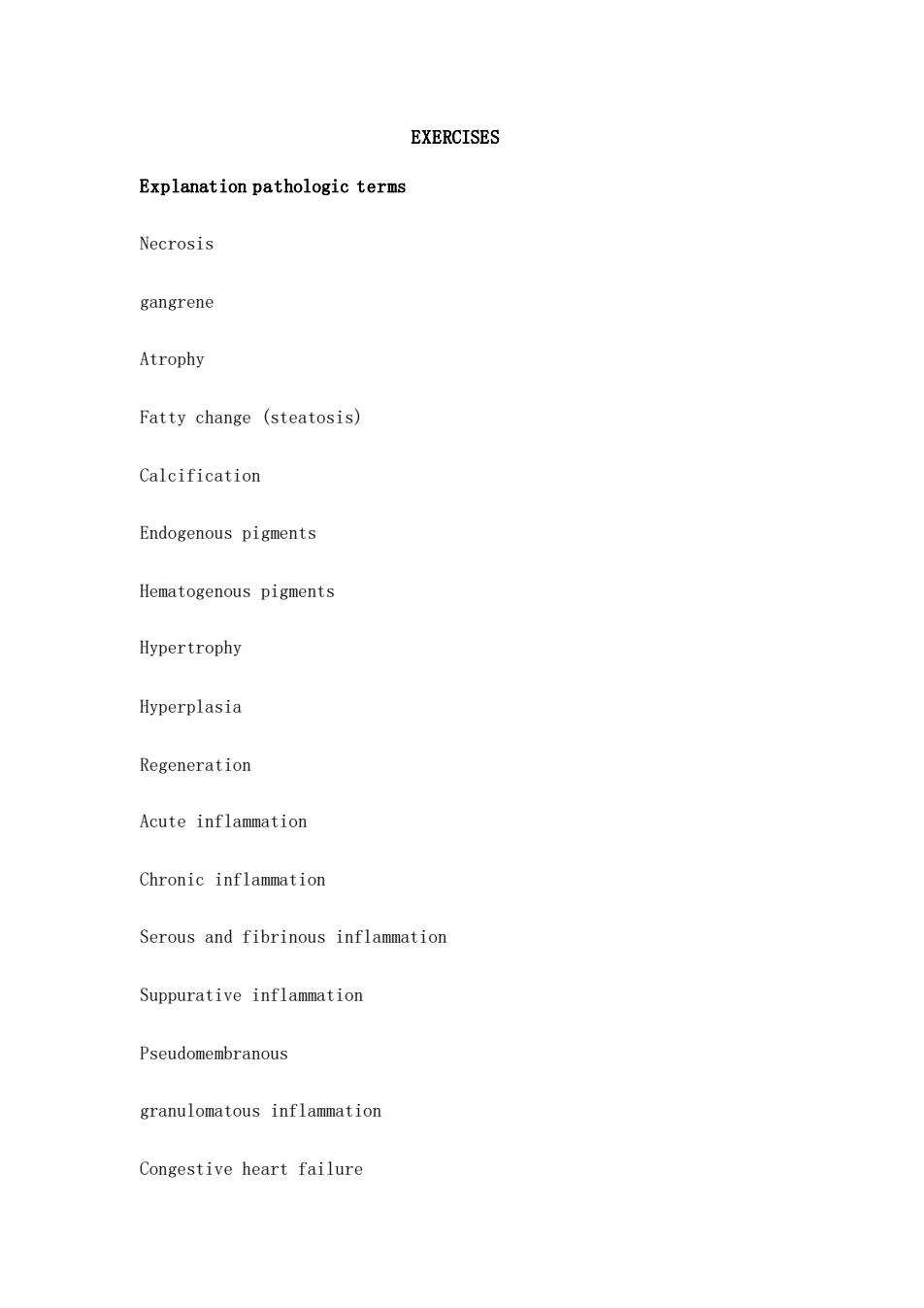
EXERCISES Explanation pathologic terms Necrosis gangrene Atrophy Fatty change (steatosis) Calcification Endogenous pigments Hematogenous pigments Hypertrophy Hyperplasia Regeneration Acute inflammation Chronic inflammation Serous and fibrinous inflammation Suppurative inflammation Pseudomembranous granulomatous inflammation Congestive heart failure
EXERCISES Explanation pathologic terms Necrosis gangrene Atrophy Fatty change (steatosis) Calcification Endogenous pigments Hematogenous pigments Hypertrophy Hyperplasia Regeneration Acute inflammation Chronic inflammation Serous and fibrinous inflammation Suppurative inflammation Pseudomembranous granulomatous inflammation Congestive heart failure
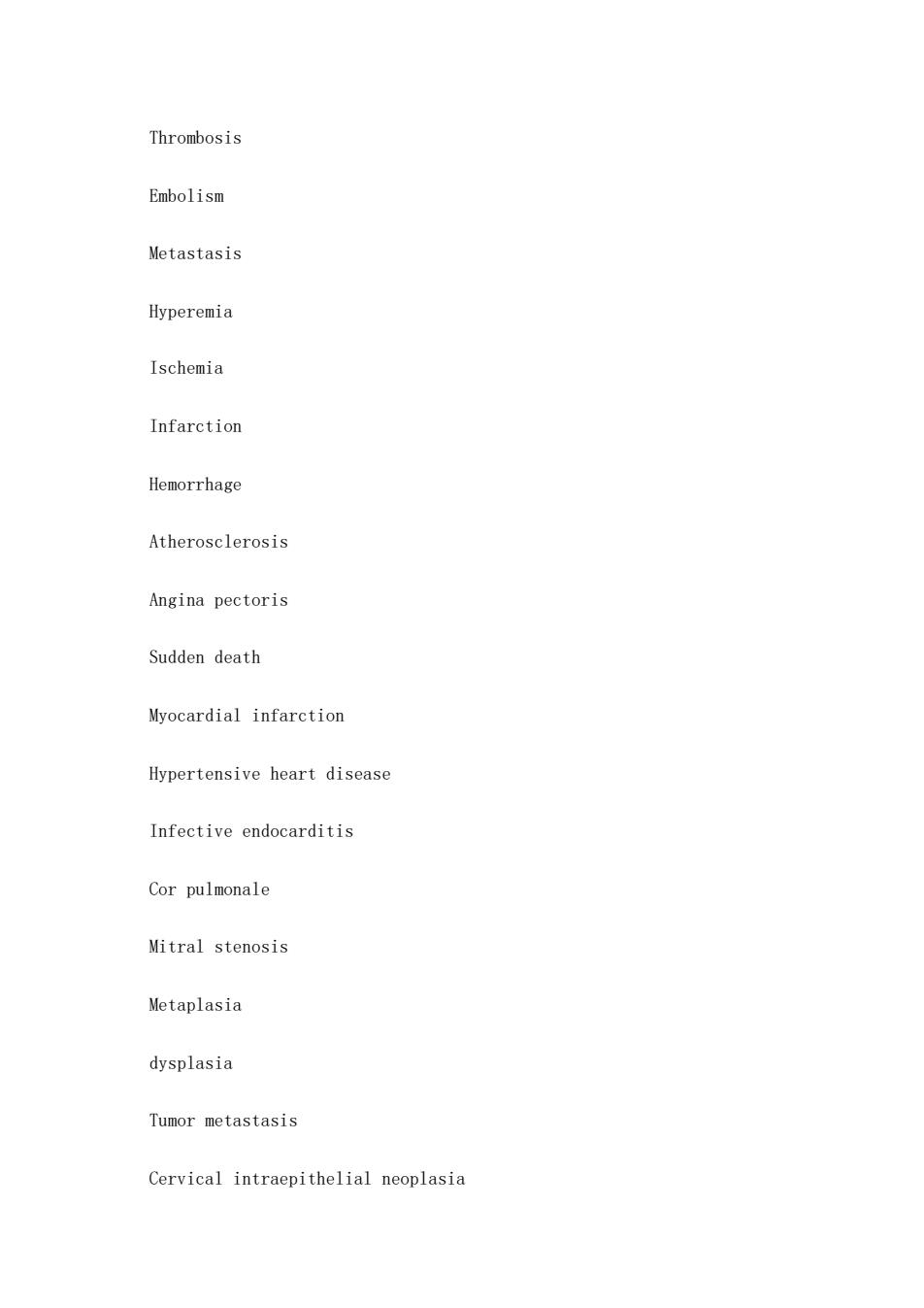
Thrombosis Embolism Metastasis Hyperemia Ischemia Infarction Hemorrhage Atherosclerosis Angina pectoris Sudden death Myocardial infarction Hypertensive heart disease Infective endocarditis Cor pulmonale Mitral stenosis Metaplasia dysplasia Tumor metastasis Cervical intraepithelial neoplasia
Thrombosis Embolism Metastasis Hyperemia Ischemia Infarction Hemorrhage Atherosclerosis Angina pectoris Sudden death Myocardial infarction Hypertensive heart disease Infective endocarditis Cor pulmonale Mitral stenosis Metaplasia dysplasia Tumor metastasis Cervical intraepithelial neoplasia
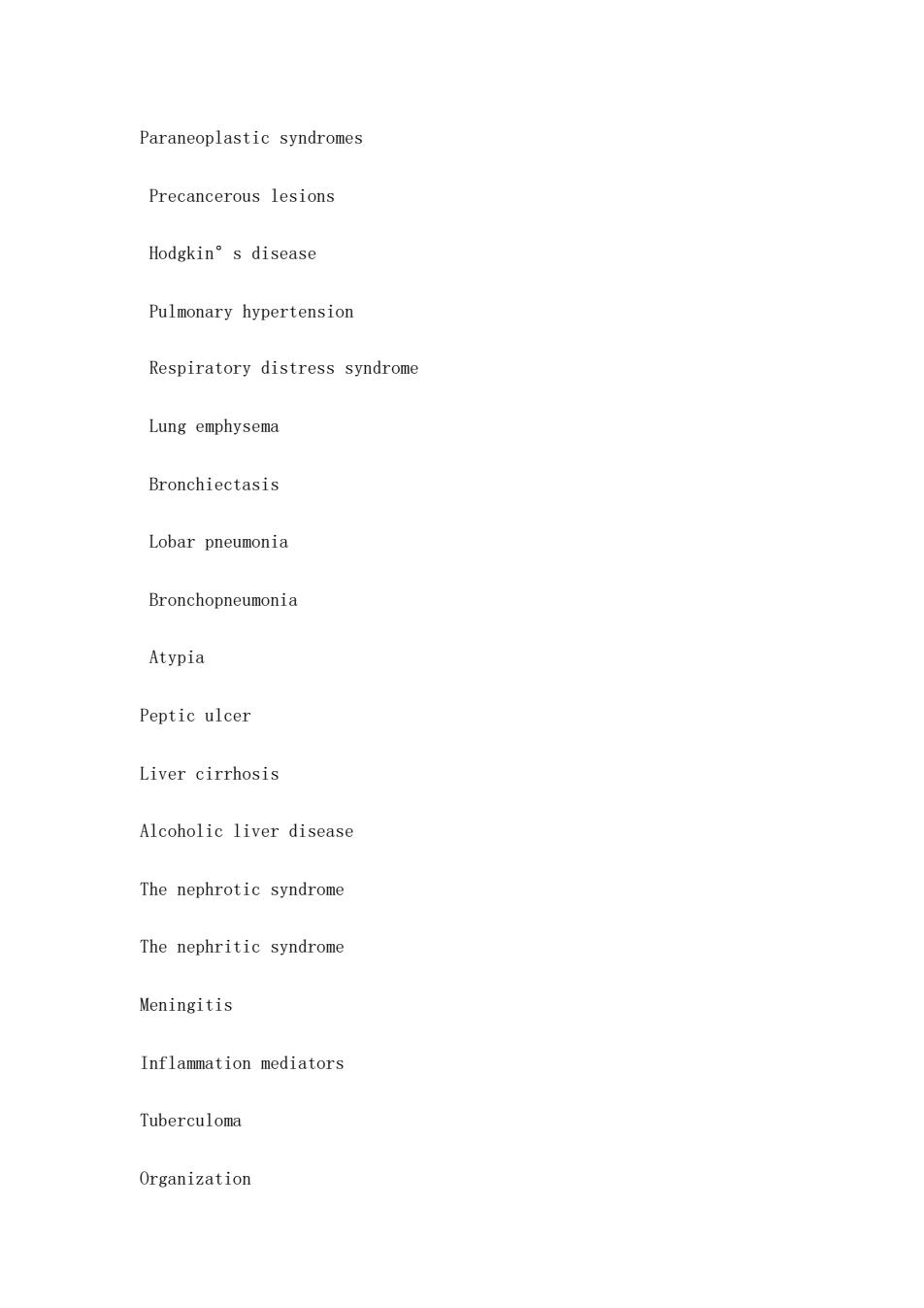
Paraneoplastic syndromes Precancerous lesions Hodgkin°s disease Pulmonary hypertension Respiratory distress syndrome Lung emphysema Bronchiectasis Lobar pneumonia Bronchopneumonia Atypia Peptic ulcer Liver cirrhosis Alcoholic liver disease The nephrotic syndrome The nephritic syndrome Meningitis Inflammation mediators Tuberculoma Organization
Paraneoplastic syndromes Precancerous lesions Hodgkin°s disease Pulmonary hypertension Respiratory distress syndrome Lung emphysema Bronchiectasis Lobar pneumonia Bronchopneumonia Atypia Peptic ulcer Liver cirrhosis Alcoholic liver disease The nephrotic syndrome The nephritic syndrome Meningitis Inflammation mediators Tuberculoma Organization
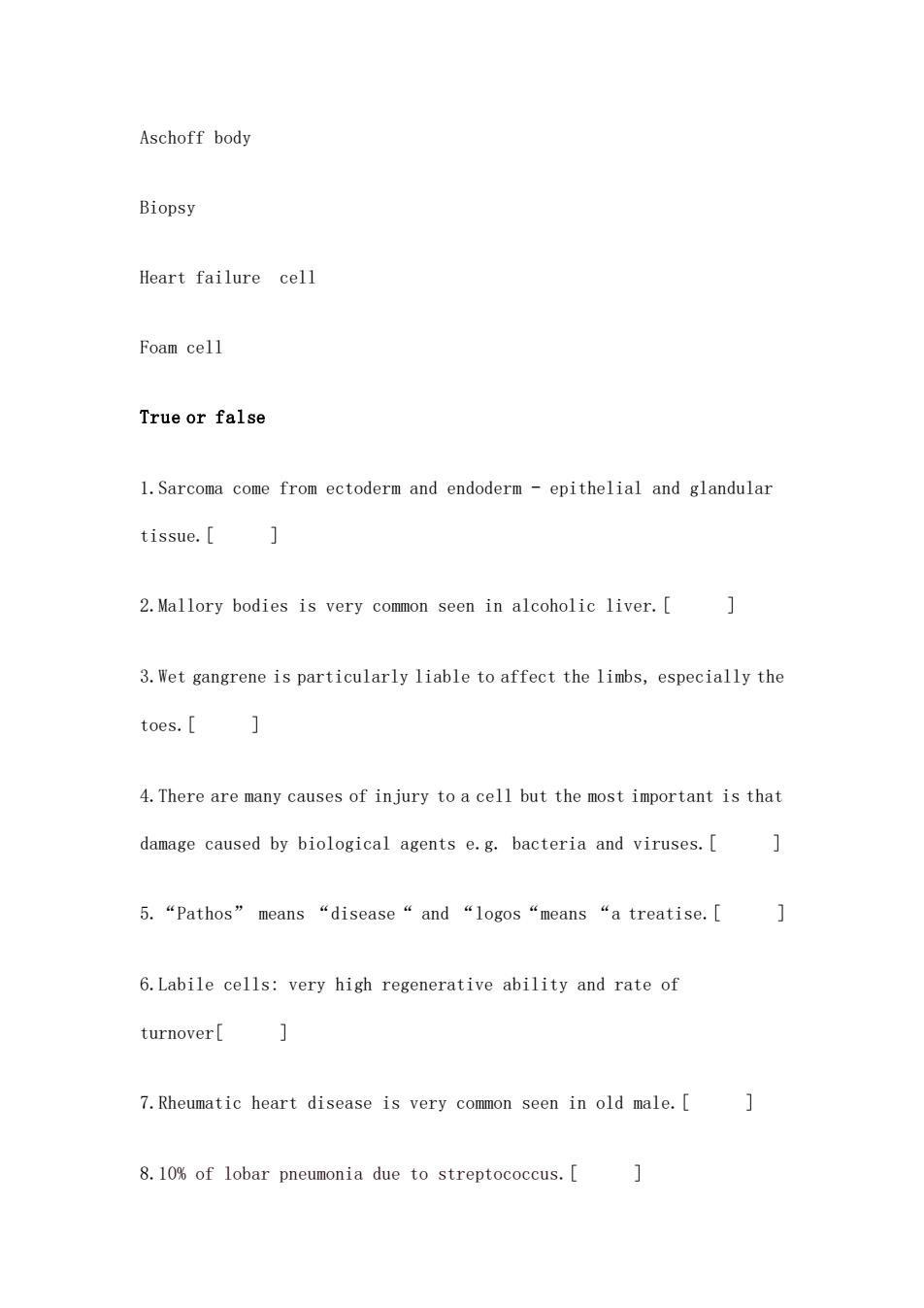
Aschoff body Biopsy Heart failure cell Foam cell True or false 1.Sarcoma come from ectoderm and endoderm-epithelial and glandular tissue.[ 2.Mallory bodies is very common seen in alcoholic liver. 3.Wet gangrene is particularly liable to affect the limbs,especially the toes.[ 4.There are many causes of injury to a cell but the most important is that damage caused by biological agents e.g.bacteria and viruses. 5.“Pathos”means“disease“and“logos“means“a treatise.[] 6.Labile cells:very high regenerative ability and rate of turnover[ 7.Rheumatic heart disease is very common seen in old male. 8.10%of lobar pneumonia due to streptococcus.[
Aschoff body Biopsy Heart failure cell Foam cell True or false 1.Sarcoma come from ectoderm and endoderm - epithelial and glandular tissue.[ ] 2.Mallory bodies is very common seen in alcoholic liver.[ ] 3.Wet gangrene is particularly liable to affect the limbs, especially the toes.[ ] 4.There are many causes of injury to a cell but the most important is that damage caused by biological agents e.g. bacteria and viruses.[ ] 5.“Pathos” means “disease“ and “logos“means “a treatise.[ ] 6.Labile cells: very high regenerative ability and rate of turnover[ ] 7.Rheumatic heart disease is very common seen in old male.[ ] 8.10% of lobar pneumonia due to streptococcus.[ ]
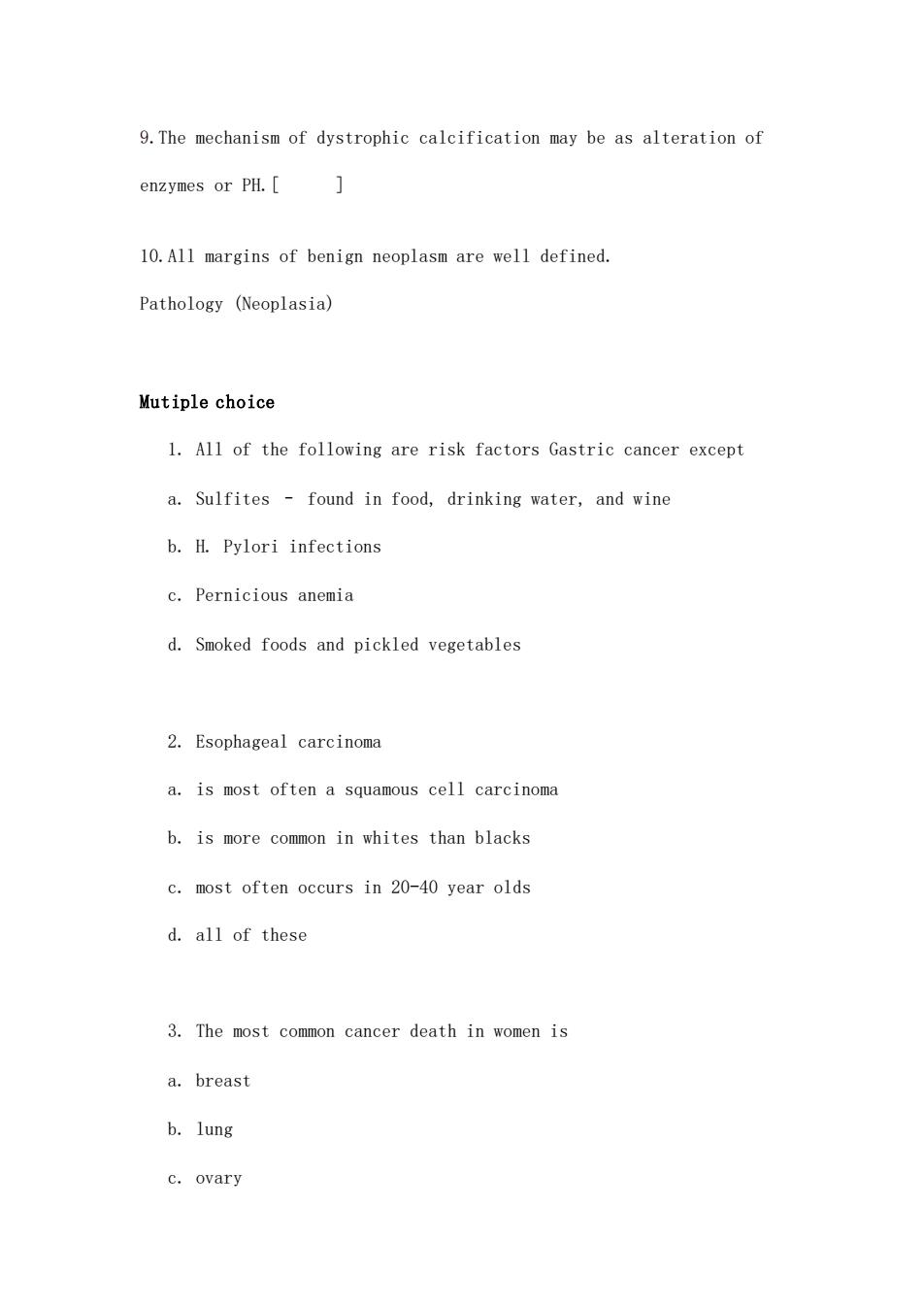
9.The mechanism of dystrophic calcification may be as alteration of enzymes or PH. ] 10.All margins of benign neoplasm are well defined. Pathology (Neoplasia) Mutiple choice 1.All of the following are risk factors Gastric cancer except a.Sulfites found in food,drinking water,and wine b.H.Pylori infections c.Pernicious anemia d.Smoked foods and pickled vegetables 2.Esophageal carcinoma a.is most often a squamous cell carcinoma b.is more common in whites than blacks c.most often occurs in 20-40 year olds d.all of these 3.The most common cancer death in women is a.breast b.lung c.ovary
9.The mechanism of dystrophic calcification may be as alteration of enzymes or PH.[ ] 10.All margins of benign neoplasm are well defined. Pathology (Neoplasia) Mutiple choice 1. All of the following are risk factors Gastric cancer except a. Sulfites – found in food, drinking water, and wine b. H. Pylori infections c. Pernicious anemia d. Smoked foods and pickled vegetables 2. Esophageal carcinoma a. is most often a squamous cell carcinoma b. is more common in whites than blacks c. most often occurs in 20-40 year olds d. all of these 3. The most common cancer death in women is a. breast b. lung c. ovary